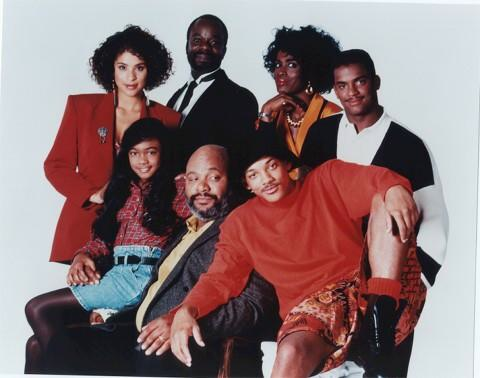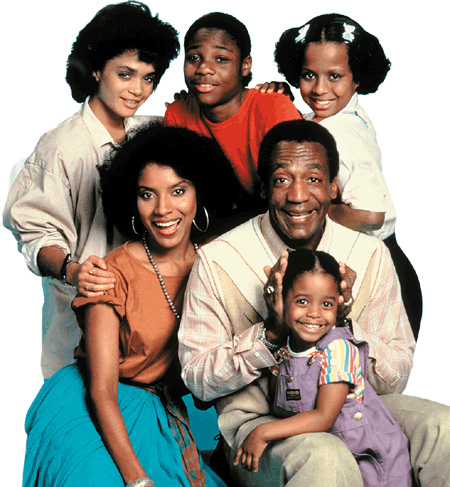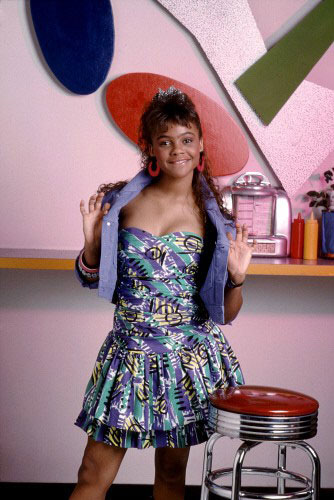How Would Fresh Prince Do It? Teaching “Diversity” to Late ’80s Babies
by: Mary Beltran / University of Wisconsin-Madison

As the instructor of a course on racial and ethnic representation in U.S. film and television, I face many challenges to raising the consciousness of my students, the latest springing from our age difference. I'm struggling with how to teach my current class, the majority of whom were weaned on the television programming of the 1990s, that they were not in fact introduced to ethnic and racial diversity through series that they remember fondly from their youth such as The Fresh Prince of Bel-Air, Family Matters (of Jaleel White's Steve Urkel fame), and Saved By the Bell. Without intimate knowledge of the evolution of ethnic representations on television and in film over the decades nor of the histories of various racialized groups, often it is too easy to see some variety in skin color combined with markers of upper-middle class status and to ascribe to these narratives the blanket interpretation of “positive” representation. If the non-white characters aren't criminals it must be good, right?

On its surface my argument against these so-called egalitarian representations of non-white characters in 1990s television narratives is solid. In this regard I build on the scholarship of Herman Gray, my graduate school mentor John Downing, and others who cogently critiqued The Cosby Show for providing a misleading representation of an upper-middle-class African American family that obfuscated how many African Americans were actually living in poverty and facing decreased opportunities in the U.S. Similarly, the storylines of the Fresh Prince's Banks family in their Bel-Air mansion arguably whitewashed the struggles of many African American families in the mid-1990s.
The dilemma, however, is that taking this stance can fall into the trap of also essentializing race and representation. What's the suggested alternative, that African Americans, or to follow that reasoning, Latino/as or other non-whites, not be represented as wealthy and/or professional? That is certainly not what I want to advocate, especially with the knowledge that children are strongly influenced by the presence of role models, or lack thereof, in the media. I also would not want to ignore the fact that representations of non-whites as “problem people” struggling with issues associated with poverty have historically reinforced negative associations ascribed to non-white groups.

So why shouldn't I see Steve Urkel and Lisa Turtle (played by Lark Voorhis on Saved By the Bell) as progressive steps in the representation of African Americans on television? Much of my contentious stance has to do with a lack of contextual framework within the narratives themselves, which leaves these images mere positive caricatures, fantasies within fantasy storylines.
Let's take for example The Fresh Prince of Bel-Air, executive produced by Quincy Jones and Winifred Hervey, and starring then-rapper and now film star Will Smith. The members of the Banks family, if anything, were ascribed stereotypes that have historically been the domain of wealthy white characters: Stuffy, materialistic, ditzy, and the like. Their cousin Will, from more diverse West Philadelphia, in contrast was upbeat, confident, and playful–qualities that made him a favorite of many of my male students, of all ethnic backgrounds. Despite his central role in the narrative, Will's point of view and backstory of growing up in a working-class, predominantly black neighborhood, which he has escaped by coming to live with the Bankses, is almost never treated in a realistic or sustained fashion, however. I find myself wanting to argue that “blackness,” if there is such a thing, as a result is left out. But then again, who is to say what form and meaning blackness has on an individual or family-by-family basis? And why can it not exist in Bel-Air? I see the flaws in my own argument, and have to admit that the representation of racialized groups is a topic that will continue to confound us in various ways.
Aside from my wish to educate my students regarding non-white perspectives that I feel were not typically expressed in Fresh Prince and other 1990s programming–and more often than not are still not represented today–this discussion illustrates a larger challenge: There's virtually no agreement on what it would mean to “represent diversity” accurately or fairly on television and in other mediated representations. Would this entail greater visibility of various racial and ethnic groups, increased realism and accuracy, or the inclusion of images that promote more egalitarian social relations? Even if “diversity” in this regard could be accomplished, would it even be supported by television advertisers and watched by enough viewers to survive?
Scholars, ethnic media advocates, advertisers, and media producers clearly disagree on these questions and will continue to do so, given the complexity of the matrix of production, representation, and consumption of media narratives and how race, ethnicity, and class are imbricated in that matrix and in U.S. social relations more generally. The 1990s programming that today's college students grew up on proves a complicated case in point. How to raise consciousness regarding patterns of representation that include the common invisibility and denigration of ethnic minorities, as well as the whitewashing of non-white histories and perspectives even while casting non-whites in more professional and “positive” roles? The challenge continues.
Image Credits:
1. The Fresh Prince of Bel-Air
2. The Cosby Show
3. Lisa Turtle
Please feel free to comment.
From Cosby to The Wire
It seems there are two axes for evaluating depictions and diversity – one within the text, another within the entire flow of television.
Cosby, for instance, could be criticized within the text, but might be admired and applauded within the flow. Or, for a different type of example, I think of the irate taxi-driving Indian guy on Knights of Prosperity or Apu on The Simpsons: within the rules of comedy and comic archetype, neither are that out of place at the level of the text. But given that they and the dude on Heroes are the only Indian men on mainstream American TV that come to mind, the fact that one is an irate taxi-driver, and the other a comically silly corner store owner, puts them in the crosshairs at the axis of flow. Which makes the tasks either of creating diversity on TV, or of evaluating it, remarkably treacherous, since one can succeed or be innocuous enough on one level and fail on another.
This is why I love The Wire (well, one reason amongst many): yes, lots of African American criminals, BUT (a) more African American roles than the rest of TV put together; (b) multiple other types of African American characters within the show (mayors, political aides, clergymen, cops, etc.); and (c) it actually explains the criminality in nuanced, institutionalized terms, not just leaving it as some form of essentialized racial attribute or inclination.
After Fresh Prince and Lisa Turtle?
Mary, your column raises some excellent questions and I think that the challenge continues for us and “late 00s babies” who are presented with award-winning films such as Crash or Babel that attempt to deal with diversity, yet rely on old and damaging stereotypes. In addition to the Fresh Prince and Lisa Turtle, what kinds of problems arise when something like Babel gives us “diversity” in the form of a deaf-mute Asian woman who is sexually promiscuous?
It would be silly to suggest that Asians or any group could be represented “correctly,” but as you suggest, it also doesn’t mean that we shouldn’t call into question the proliferation of characters that still somehow exclude a range of experiences.
(Also, I haven’t yet seen The Pursuit of Happiness, but the previews make me wonder: has Will Smith picked up where Bill Cosby left off with the promotion of the idea that simply “pulling yourself up by your bootstraps” can overcome any institutionalized injustices?)
How “Real” Were the Cosbys
In my Survey of Mass Comm class at an HBCU, we had an intriguing discussion about the Cosby Show. One student said the Cosby Show “lied to me,” a very strong expression that said there was something intentionally dishonest about the show’s depicition of African American family life. Students had varied opinions about the show. One student said it didn’t reflect reality, to which another student replied, “Who’s reality? That show was more like my reality than yours.”
Mary discussed the difficulties of critiquing representation in shows about African Americans without essentializing. My view, as a 47-year-old white male, is that such shows are in a no-win situation. In the views of some, the shows are either “unrealistic” as in The Cosbys, or “stereotyped,” as in any shows that depict young black hoodlums. That is, shows are either “too ghetto” or “not ghetto enough,” as if those were the only two choices. I know many black families with two parents who don’t do drugs, whose children go to college or are headed for college, and yes, both of themm are professionals. But no, they don’t look and act like the Cosbys, either. It would be progress if we saw a TV series depicting a family like the black family in “Black/White,” a middle class family but with some struggles bigger than which colorful sweater the patriarch wears this week.
ambivalence
Such a complicated issue, made more complicated at times by the particular group of students and their experiences of difference/diversity outside of television. Many of the students I teach come from small communities which are quite homogeneous and the media is a primary site of their exposure to many type of difference.
I am a big fan of Herman Gray’s work and especially the way he talks about the labour that such representations perform not only in the flow of TV (thanks Jonathan, that’s a great way to think about it) but within larger social frames as well. Increasingly I think that a lot of this labour is neoliberal. Movies like Babel and Crash and Three Needles imagine difference/diversity not only ahistorically but also as existing outside relations of power.What do these texts tell us about power and citizenship, for example, about the role of the State and social institutions in various modes of governance. In so many of these texts, all these questions are curiously absent.
How do we make TV diverse?
This article raises many questions about television and diversity. It is a hard subject to tackle because one person may think a show is diverse while another does not. Even if a show represented many different races, someone would find something or someone not represented. Also if many different kinds of people are represented in a television show, how are they represented? All different groups of people have stereotypes attached to them, so would this need to be addressed as well? All television can do is try to be diverse and represent people in a way that is true and entertaining, which is easier said than done.
Hate it or Love it
I too grew up in the generation that watched shows like The Cosby show, or Family Matters. The issue of a positive role model is interesting in that the families are portrayed to be “whitewashed” and do not show the characteristics and issues that pertain to blackness. But, I wonder with today’s mainstream rap stars that promote being thug and gettin’ money so that they can acquire petty immaterial objects and degrade women. I wonder what image is a better role model. A non-white “positive” character or a bullet scarred crack dealer from Queens. While representations of rap stars and urban lifestyle are ubiquitous in today’s society, it is difficult to find an appropriate representation of race and its positive connotations. Race is perceived by the individual and their background, independent of that may be a person’s inherent biases or preconceptions. This effects how they intake the text, and for some they may reject it, others may believe it to be very similar to their own life. To teach it I believe a breakdown of the individuals preconceptions of race and culture must be defined so that an appropriate analysis of the text can be obtained.
Race as Representation
This article argues that “late 80s babies” have been exposed to a fake diversity presented through early 90s television programs and that diversity cannot truly be represented in a television program that is expected to survive; I agree. Early 90s television programs, including “The Cosby Show,” were still following the model of Reaganism set in the 80s. The concept of returning to family values was clear in most early 90s shows, as was the depiction of constructed images of African Americans. The show “Cops” and “The Cosby Show,” which were produced in the 80s but ran through the early 90s, were perfect examples of the persisting Reaganistic vales found in early 90s television. Portrayals of “bad” blacks as a social menace and therefore a welfare drain were found in “Cops,” while portrayals of “good,” assimilated (white-washed) blacks were found in programs like “The Cosby Show.” Cosby’s show set up a precedent for future early 90s programs featuring black families to be a part of the mythical middle class and to “act” white. The “late 80s babies” may have been blinded by the black-white binary of the news and shows like “Cops,” but probably thought very little of the “normal,” meaning white-washed, black families they saw on shows like “Family Matters” or “The Cosby Show.” Because race is a matter of both cultural representation and social structure, the “late 80s babies’” idea of race is skewed. This brings us to Mary’s second point: a real depiction of diversity would be fairly impossible to portray, and if a show were to somehow do such a thing, it would not survive. Looking to the past, earlier shows that attempted such a feat had not survived. The show “Franks Place,” probably the most “accurate” portrayal of African American life to ever be on television, had been lost due to a lack of audience. Mary’s fears had become a reality two years prior to the series of shows she analyzed in this article. The reason the show failed can be connected to the unfortunate schedule hopping it underwent, but is more directly linked to its inability to gain a sizeable audience. I would like to think that if a show similar to “Franks Place” were to be reproduced, it may gain enough viewership to survive, but feel that as much as our society has progressed since the early 90s, it still would still fail to accept reality for what it is.
Pingback: Race and Media | e-lizalinks